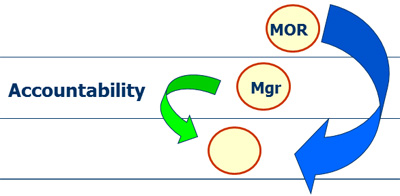I don’t talk much about Cross Functional relationships. It’s advanced stuff. But when it rears its ugly head, it’s a mess. Cross Functional relationships are, most often, defined in the organization by a dotted line. Dotted lines create ambiguity. Ambiguity kills accountability. Get rid of the dotted lines on your organization chart. They are killing you.
In Cross Functional relationships, two managers, most often in roles at the SAME Stratum, work together, but neither is the manager of the other. In this example, YOU are the manager, so it is your problem to define their working relationship. And you cannot define their working relationship with a dotted line.
Most organizations don’t know how to define this relationship, so it is often left undefined and that is where the trouble starts. It looks like a personality conflict or a breakdown in communication, but it is a structural problem because YOU did not properly define the relationship.
Elliott Jaques (Requisite Organization) specifically defines these Cross Functional relationships so we can get on with the work. This replaces your dotted lines.
Cross Functional Relationships
- Prescribing relationship
- Audit relationship
- Coordinating relationship
- Monitoring relationship
- Service getting relationship
- Advisory relationship
- Collateral relationship
On the face of it, defining these relationships, up front, resolves the dotted line, resolves the ambiguity and creates accountability.
Who can call who into a meeting?
Who can instruct who to do something?
In a disagreement, who decides?
Over the next few days, I will talk about each of these relationships and the clear accountability between the people in a Cross Functional relationship.
___
Our next online program – Hiring Talent is scheduled to kick off August 1, 2011. If you would like to find out more about the program or pre-register, follow this link.

